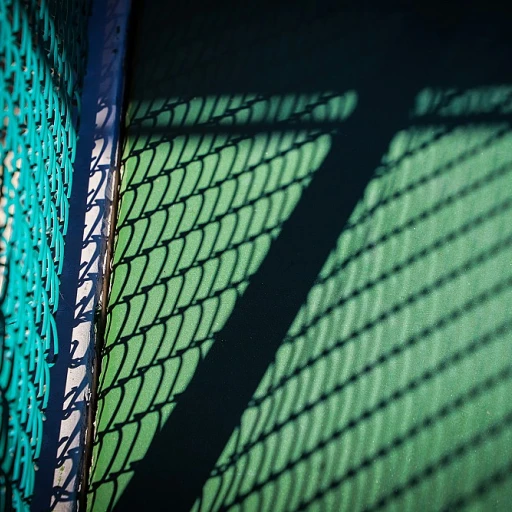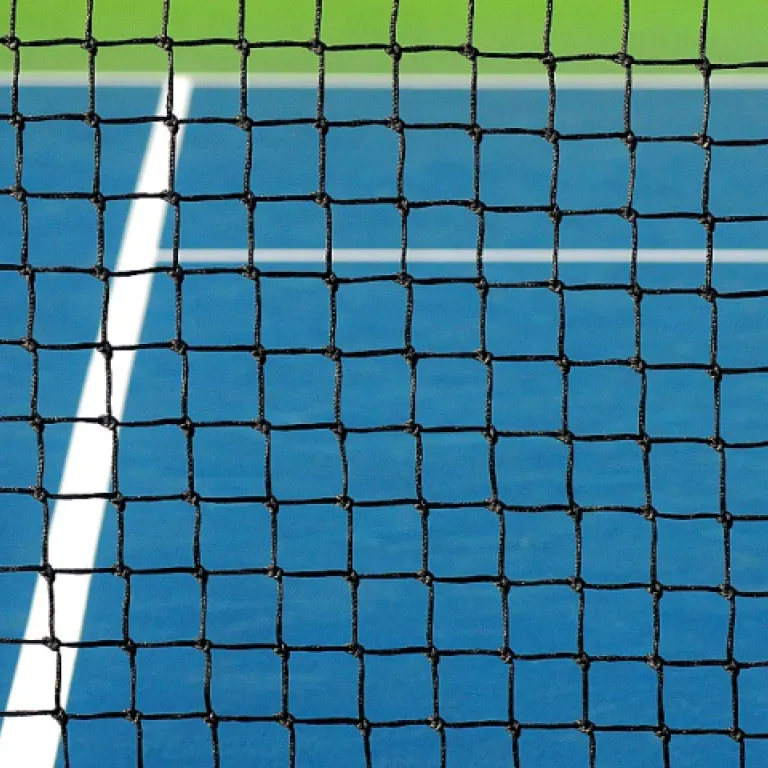Understanding the Basics of Court Conversion
Grasping the Essentials of Tennis-to-Pickleball Court Transformation
Converting a tennis court to four pickleball courts necessitates a solid understanding of the changes in dimensions and layout that differentiate these two sports. A standard tennis court offers ample space, typically measuring 78 feet long and 36 feet wide, to accommodate several pickleball courts, which are notably smaller in size.
One of the fundamental differences lies in the court dimensions and the net height. A pickleball court measures 44 feet long and 20 feet wide, significantly smaller than a tennis court, allowing for up to four pickleball courts to fit within the same footprint. It is crucial to consider how these layouts can be adjusted both strategically and practically to optimize space and ensure playability.
The net height also varies; in pickleball, it stands at 34 inches high at the center, contrasting with a standard tennis net height of 36 inches. Despite smaller court dimensions, the conversion process must account for the surface and how lines are marked to maintain the integrity of the game.
This conversion serves not only to maximize recreational space but also enhances community engagement by accommodating more players at once. The drive for such transformations has been partly fueled by the rising popularity of pickleball, with a wide range of communities participating in this trending sport.
For more details on how public spaces are adapting to this shift, see how
pickleball courts at MLK Park have been effectively integrated into local recreation options.
Equipment and Materials Needed
Gathering Essential Gear for Court Transformation
When considering converting a tennis court into pickleball courts, understanding the equipment and materials needed is crucial for a successful transformation. While integrating the elements necessary for a new athletic setup may seem overwhelming, a well-prepared approach ensures a smooth conversion process.
- Boundary Lines and Markings: To define the court dimensions, you'll need tape or paint suitable for outdoor surfaces. The pickleball court is 20 by 44 feet. The straight lines marking the boundaries and service areas should be precise within a few inches to maintain standard game conditions. As outlined in our guide on painting pickleball courts, selecting durable, weather-resistant paints will ensure longevity on the outdoor surface.
- Net Systems: Proper pickleball nets are lower than those used on tennis courts, standing at 36 inches at the sidelines and 34 inches at the center. Adjustable posts are available to accommodate the courts' varied uses and make converting tennis properties straightforward.
- Surface Adaptations: Cushioning materials or surface adaptations may be required depending on the court's current condition. Ensuring a slip-resistant layout is paramount, focusing on enhancing the players' safety and maximizing playability.
- Court Dense Materials: For optimal space utilization, temporary or roll-out courts can be considered for conversion endeavors. These are efficient in community areas where courts need to be adaptable for multiple uses.
Preparing these elements ensures that the transition from tennis court to pickleball courts is as smooth as possible, allowing local players to enjoy competitive games in a well-defined, accommodating space.
Step-by-Step Conversion Process
Steps to Transforming Your Tennis Court
Converting a space initially designed for tennis into a lively area for pickleball can seem daunting, yet it's a rewarding endeavor that supports both accessibility and community engagement. Here's how you can achieve a successful court conversion:
- Design a Functional Layout
Begin by familiarizing yourself with the standard dimensions of a pickleball court, which measures 20 feet wide and 44 feet long. To fit a functional pickleball layout onto an existing tennis court, you need to design a court layout that allows for up to four pickleball courts. This means aligning the courts with enough space between them to ensure safety and accommodate multiple players.
- Mark the New Court Dimensions
With court measurements in hand, mark the pickleball court dimensions on the tennis court surface. The precision of these lines is crucial since accurate dimensions ensure fair play for everyone involved. Utilize a temporary chalk line to test different layouts before committing.
- Adjust the Net Heights for Pickleball
The net on a pickleball court should stand at 36 inches high at the sidelines and 34 inches at the center. Converting tennis nets may involve lowering them or utilizing portable pickleball nets, which provide versatility and easy setup.
- Installing Permanent or Temporary Lines
Opt for either painted lines or removable court tape to outline each pickleball court. Both choices offer unique benefits: paint offers permanence but should be executed carefully, while tape allows for flexibility and test adjustments. Consider diving into the essentials of painting pickleball courts for tips on achieving a professional finish.
By attentively working through these steps, you can transform tennis courts into spaces that meet the enthusiastic demands of the pickleball community. Should you wish for a refreshing twist on the game, don't miss the chance to explore the thrill of
glow in the dark pickleball, a unique experience that adds a new dimension of fun to your courts.
Challenges and Solutions in Court Conversion
Addressing Common Challenges and Their Solutions
Converting a tennis court into pickleball courts can present several challenges. One common issue is ensuring the accurate dimensions needed to fit four separate pickleball playing areas. A standard pickleball court measures 20 feet wide and 44 feet long, which requires meticulous planning to fit them within the larger dimensions of a tennis court.
Understanding the layout is crucial. Tennis courts, being larger, have differing dimensions that must be recalibrated to accommodate the smaller pickleball court requirements. The need for precision in placing the pickleball lines cannot be overstated. Lines must be carefully drawn to guarantee compliance with regulation court dimensions.
Place the nets correctly, ensuring they are 34 inches high at the center and rise to 36 inches at the posts. This gives the courts their required layout and playability. Unlike in tennis, where the net is lower, the higher net setup in pickleball demands accurate adjustments, ensuring no space is wasted at the center.
Another challenge is managing the surface condition. Tennis courts, generally outdoor surfaces, may have uneven sections that affect pickleball play. Ensure an even surface by applying solutions like resurfacing, filling cracks, or using surfaces tailor-fit for pickleball play.
When considering space and layout, another concern is the community and players' needs. Converting tennis courts into pickleball-playing areas can impact accessibility and scheduling for both sports enthusiasts. Balancing the space allocation between the two sports fosters community relations and ensures all players are adequately served.
In summary, meticulous planning, accurate measurements, and maintenance considerations are pivotal in addressing the challenges of converting tennis courts into pickleball courts while maximizing playability and community engagement.
Maximizing Space and Playability
Optimal Planning for Space Utilization
Converting a standard tennis court into multiple pickleball courts creates opportunities to accommodate more players while ensuring a smooth play experience. This transformation emphasizes the smart use of available space, making the most of the court layout for enhanced playability.
Begin by understanding the dimensions difference. A tennis court measures around 78 feet long and 36 feet wide, while a standard pickleball court is 44 feet long and 20 feet wide. This fundamental difference allows a tennis court to fit up to four pickleball courts, enhancing community access and player engagement.
Strategic Court Layouts
- Align the nets and boundaries: For consistency, align each pickleball court so the center of each is in line with the tennis court’s baseline. Ensure nets are 36 inches high at the sidelines and 34 inches at the center.
- Maximize player movement: Spaces between the converted courts must be wide enough to allow player movement without interference. Creating a buffer zone ensures players can move freely and reduces the risk of overlapping games.
- Lines and markings: Accurately marked lines are essential to maintain standard court dimensions for pickleball. The lines should be visible and consistent. Proper lighting can further enhance visibility during play.
Community and Flexibility
Converting tennis courts into pickleball courts invites more players, promoting an inclusive community spirit. With conversion, pickleball can be played more easily, thus encouraging participation across different age groups. The adaptability of the area allows for efficient court schedules, minimizing downtime between games, and optimizing the surface for various skill levels.
In conclusion, the strategic transformation of tennis courts into pickleball courts maximizes space utilization while accommodating growing community interest in the sport. Through careful planning and execution, the courts' functionality and accessibility can be significantly enhanced, providing an engaging environment for all players.
Maintenance and Upkeep of Converted Courts
Ensuring Longevity and Optimal Play Conditions
Converting tennis courts into pickleball courts involves a comprehensive approach to maintenance and upkeep. To ensure players experience the best conditions, regular attention to the court surface and layout is vital.
- Regular Surface Inspection: Routinely check for cracks, debris, or any irregularities on the court surface. Addressing these issues promptly will not only maintain player safety but also prolong the court’s lifespan.
- Line Maintenance: Over time, lines may fade due to weather conditions or frequent play. Maintain the dimensions by repainting lines as necessary, ensuring they remain clearly visible. Consistent dimensions are crucial for a standard game, which requires precise court feet markers.
- Net Integrity: The net should always be maintained at the proper height, which is 36 inches at the sidelines and 34 inches at the center. Regular checks and adjustments are necessary to ensure they're in optimal condition for play.
- Court Cleaning Schedule: Establish a regular cleaning routine to prevent dirt and debris from accumulating. This will safeguard the surface integrity and provide a more enjoyable playing experience.
- Community Engagement: Engage the community by organizing regular check-ups involving players. Their input is invaluable for addressing unnoticed issues and ensuring courts fit community standards.
By effectively managing the upkeep of converted courts, you create an inviting and functional space for pickleball enthusiasts. Proper maintenance not only preserves the court layout but also enhances playability, ensuring a constant flow of new and returning players eager to enjoy this growing sport.
Incorporate these strategies into your court conversion plan to achieve a sustainable and community-friendly pickleball environment.

